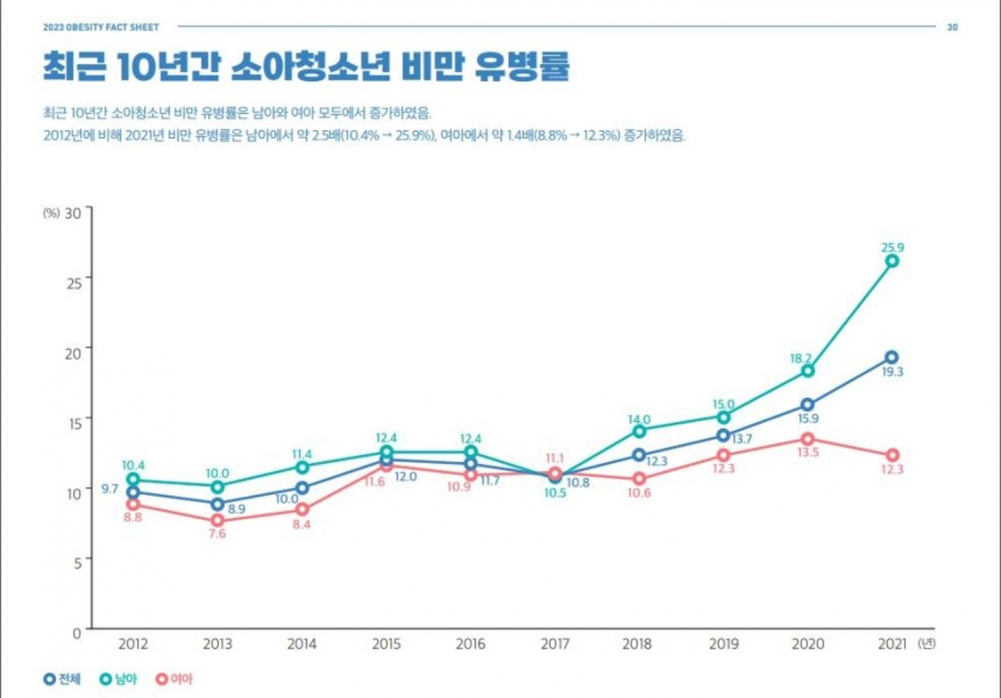Rising Obesity Rates Among Korean Youth Highlight Need for Increased Physical Activity

As obesity rates among Korean youth continue to rise, a recent report indicates that physical activity levels remain stagnant. The reliance on school-based physical education programs is insufficient, and there is a pressing need for these initiatives to extend into homes and communities.
According to a report released on July 7, 2025, by the Korea Institute for Health and Social Affairs, the participation rate in the recommended physical activity benchmark of '60 minutes a day, five days a week' was alarmingly low, with only 25.1% of boys and 8.9% of girls meeting this standard last year. This is only a slight increase from 2015, when the figures were 20.5% for boys and 7.4% for girls. During the same period, obesity rates surged, with boys increasing from 8.8% to 15.5% and girls from 6.1% to 9.2%.
The report emphasizes that the decline in physical activity, which was exacerbated during the COVID-19 pandemic, has not recovered even after its conclusion. It noted that the time spent sitting for non-learning activities increased from an average of 2.8 hours per day in 2019 to 3.8 hours in 2020, and remained at 3.3 hours in 2024, failing to revert to pre-pandemic levels. This lack of physical activity has led to developmental issues in physical fitness and a trend towards sedentary leisure activities.
To combat this deficiency in physical activity, the report suggests that responsibility should not rest solely on schools. It argues that physical activity is a broader lifestyle issue for students, and merely enhancing school sports programs will not suffice. Policies that treat student health as solely the concern of educational authorities have contributed to this problem. Instead, it proposes 'home-linked' approaches, where schools assign activities that families can do together, and 'community-linked' strategies, where local health centers manage programs for overweight students.
The report calls for the creation of environments that support and stimulate physical activity among students. A 2022 survey on youth health behaviors revealed that the primary motivation for students to engage in exercise or physical activities was enjoyment (33.3%), followed by health (20.6%) and weight loss (16.4%).
What do you think?
0 reactions





